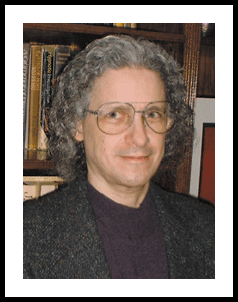Staying Alive As A Trader
Jeffrey Owen Katz
by Jayanthi Gopalakrishnan
Jeffrey Owen Katz is a professional trader and consultant specializing in predictive modeling and forecasting. He is president and founder of Scientific Consultant Services, a company focused on the development of sophisticated artificial intelligence (neural networks and genetic algorithms) software, primarily for application in the financial markets. He was first to develop a commercial neural network forecasting package for the Standard & Poor's 500 (NexTurn, released in 1989). He introduced the first 32-bit neural network development tool (N-Train). He was the first to make artificial intelligence technology accessible to TradeStation users through such products as TradeNet and TS-Evolve. He was also the first to publish a paper on genetically evolving rule-based trading systems. He has published a number of articles in a diverse selection of professional journals, trade publications, anthologies, and also coauthored (with Donna L. McCormick) several books.STOCKS & COMMODITIES Editor Jayanthi Gopalakrishnan interviewed Katz via telephone on November 10, 2005.

One of the secrets to staying alive as a trader: Don't try to trade big. Trade small, but frequently.
How did you get interested in the financial markets?
Back in the 1970s, I used to dabble in stocks, and at that time, William O'Neil was publishing Daily Charts. I would go over those charts and visually backtest different kinds of systems. I found one pattern where there would be a very low-volume, low-liquidity stock -- usually an oil stock -- and you'd see a spike in volume and prices would start going up slightly instead of just staying flat. That would be a good breakout-type signal for buying. In those days, breakout systems worked well. I was hooked!
I was only sporadically involved in the markets until about 1986, when the personal computer came along and I got more involved. CompuServe got started about then, and using it you could download actual data, so I started putting together databases and trying to implement in Fortran the same kind of system I used with Daily Charts. By then, though, the breakout system had stopped working as well in stocks. Stock prices moved too suddenly; by the time there was a breakout, it was already too late to get into a profitable trade.
What was the difference?
In the early days, before the advent of low-cost, high-speed computers, breakouts would occur and people would see them and jump in, but slowly. Or the rumor mill and tip sheets would pick up on a stock, triggering a slow in-flow in the following weeks. Markets were slower and less efficient in those days, which gave you time to jump on a trend. By the time I started playing with the markets using computers in 1986, things had sped up, with information being disseminated faster than ever. When a stock moved, it moved fast, with no tradable follow-through.
So things changed a bit.
Yes. Part of that was the 1987 crash, which scared a lot of the public out of the markets. More of the institutions were in because they had computers and could respond quickly. I switched over to the OEX and built systems for that. That's when I started getting into finance and mathematics and developing sophisticated trading systems using neural network pattern recognition, genetic algorithms, and all kinds of other techniques.
I traded the OEX on and off, but at that point, the options were spongy and the market makers took advantage of you. I eventually switched to the S&P futures, which I thought were a much fairer market. I started playing the S&P, which didn't have as many of those kinds of problems. I stuck with that through 1997 when I had fully automated daytrading systems. I had problems with brokers at that time. They did not like handling limit orders; I would be put on indefinite hold while I waited for feedback regarding fills.
You must have been relieved when electronic trading came on the scene.
Yes! It made it possible to correctly trade the kinds of systems I do.
Since Globex came online, I've been trading the ES and NQ. I have also
traded the QQQQ. I use Interactive Brokers, which has a programmer's API
that makes it easy to attach your own software. That's how I trade now.
I have one system that gives me the signal directions, and another that
allows me to semi-automatically work the market.
...Continued in the January 2006 issue of Technical Analysis of STOCKS & COMMODITIES
Excerpted from an article originally published in the January 2006 issue of Technical Analysis of STOCKS & COMMODITIES magazine. All rights reserved. © Copyright 2005, Technical Analysis, Inc.
Return to January 2006 Contents